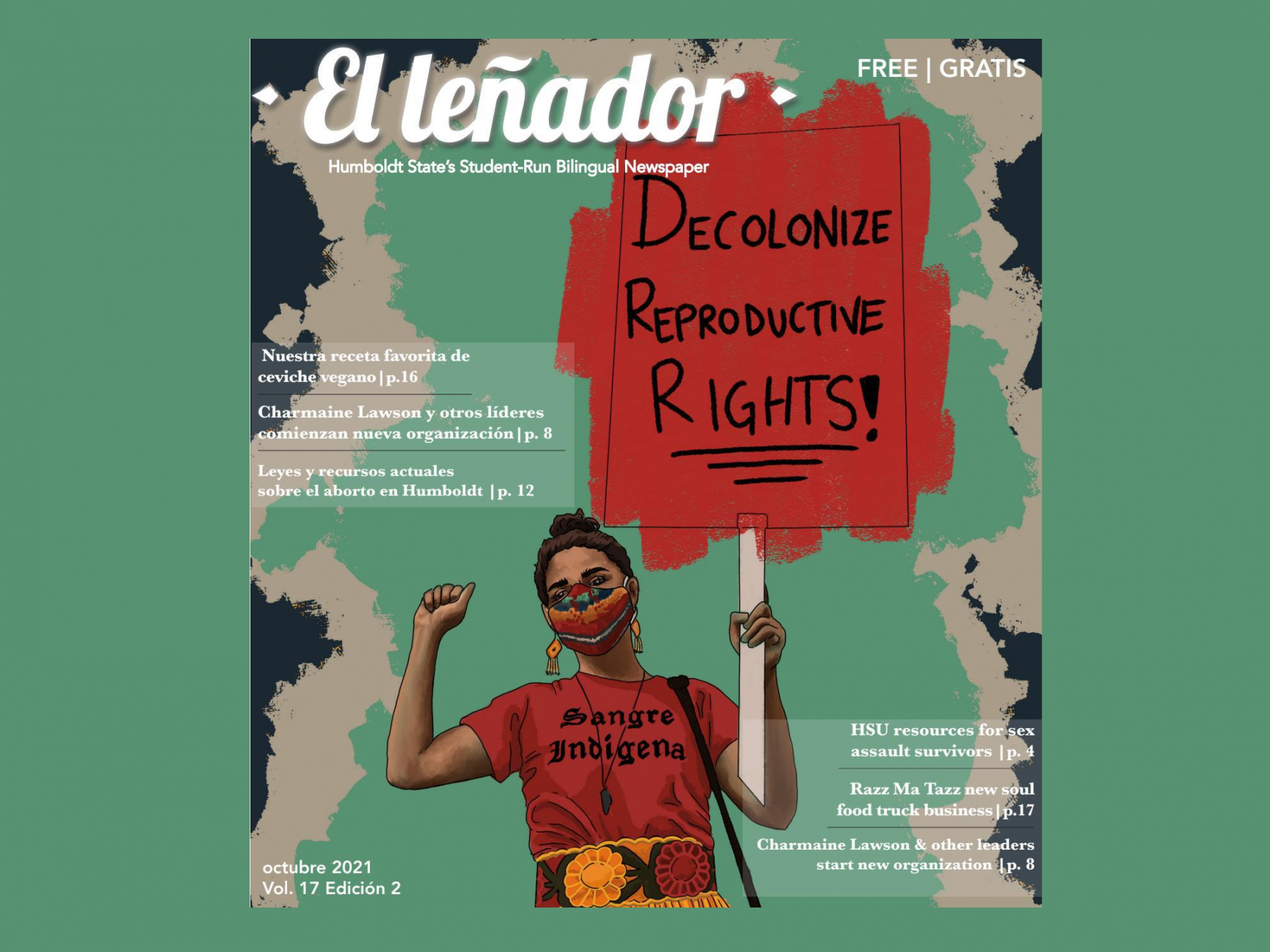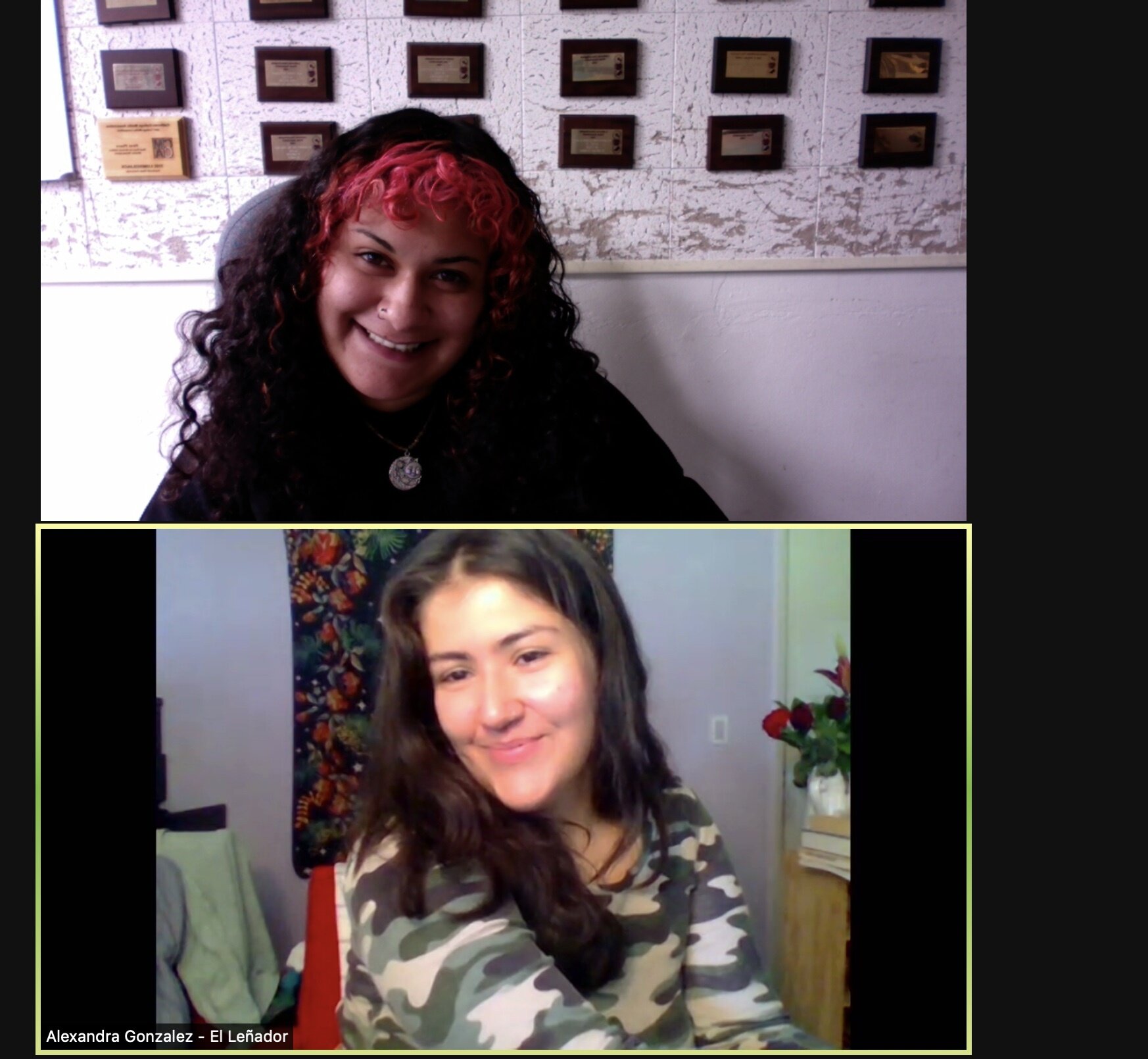
There’s a community in Northern California where, despite a sizable and steadily growing Latino population, there’s only one bilingual newspaper — and it’s run by student journalists at Humboldt State University.
El Leñador — The Lumberjack, in Spanish — was created eight years ago after the university became a Hispanic-serving institution, which means at least 25 percent of the student body is Hispanic. As the only bilingual paper in Humboldt County, El Leñador doesn’t just cover campus events, but also issues of importance to the broader community, whether it’s updates on Covid case counts and mask policies, how to find immigration and housing resources, profiles of local Latino business and restaurant owners and recipes for spicy cauliflower ceviche.
While Humboldt County — which sits near the Oregon border, nestled between national forests and the Pacific Ocean — is more than 80 percent white, the community has been diversifying in recent years, along with the campus. Now the university is more than one-third Hispanic.

Co-editors in chief Karina Ramos Villalobos and Alexandra Gonzalez say El Leñador plays a critical role in connecting Spanish-speakers to the resources and information they need — and in letting the community represent itself on its own terms.
“There’s no other publication that gives them updates on Covid, that gives them stories about people like us, about people who don’t really get represented,” Ramos Villalobos said. “When you open up the news, it’s always a story about deportation or ICE, or things that don’t really reflect our culture and our beauty and our reality.”
NBCU Academy spoke to Ramos Villalobos and Gonzalez about what it’s like to run a bilingual student newspaper and how a campus publication can serve the broader community. The transcript has been edited for length and clarity.
NBCU Academy: How did El Leñador start? What was the need that the paper filled?
Karina Ramos Villalobos: El Leñador started in 2013, after Humboldt State University became a Hispanic-serving institution, and there was a big increase in Latinx students coming to HSU. That’s when we thought there was a need for more representation for our community.
Alexandra Gonzalez: It started off as a little insert in The Lumberjack, the 92-year-old newspaper on campus, and then became its own thing. Historically, Humboldt County has been a predominantly white community, but when it became a Hispanic-serving institution, a lot more Latinx students started going up. Now, El Leñador is the only bilingual newspaper in the whole county. A lot of people weren’t getting the information that they need, so we saw the need. It’s important because they weren’t getting to hear the perspectives of people who look like them.
“A lot of people weren’t getting the information that they need, so we saw the need… They weren’t getting to hear the perspectives of people who look like them.”
— Alexandra Gonzalez, co-editor in chief, El Leñador
Ramos Villalobos: The other day we got some feedback from a local artist who’s also an alum. He was talking to someone who works for a company here in Humboldt County, and the workplace is filled with immigrants, and he was saying how they rely on El Leñador for their news, because there’s no other publication that gives them the updates on Covid, that gives them stories about people like us, about people who don’t really get represented. Because when you open up the news, it’s always a story about deportation or ICE, or things that don’t really reflect our culture and our beauty and our reality.
I notice that a lot of your stories are about trying to get critical information to readers — Covid updates, how to get housing assistance or find free food during the pandemic. Can you talk about this part of your mission and why it’s important?
Ramos Villalobos: We know there’s a need to serve our Latinx community and our other diverse communities. They need to know where they can go for those types of resources for DACA [Deferred Action for Childhood Arrivals program], or for legal services, or talking about immigration and getting their papers — and we’ve written those stories and hopefully people have engaged with the content.
Gonzalez: Like we said, that’s not out there. Things aren’t being printed for them to understand in their language. Practically speaking, there are all these resources that they might not know about. Especially in this area, since it’s so rural. It’s literally in the middle of the forest. If you don’t see it, you don’t know about it. That’s where we come in.
What’s the process of creating a bilingual newspaper? How is it run?
“Everyone that’s on the staff is there for the same reason. We want to produce content that will benefit our community and have people engage with our paper.”
— Karina Ramos Villalobos, co-editor in chief, El Leñador
Gonzalez: A lot of times we sit together and brainstorm what stories do people need to hear, both in English and Spanish, and what stories are going to make an impact? Our stories are written in English and translated into Spanish. Also we get to make that connection through language and interview people in Spanish. I’ve learned that things in Spanish don’t always translate so well into English. So it’s a different kind of connection when you’re able to speak to someone in Spanish and understand their language. That’s a great process that we have, connecting with people through language.
Ramos Villalobos: Everyone that’s on the staff is there for the same reason. We want to produce content that will benefit our community and have people engage with our paper. We listen to our audience because we really want to understand what needs to be produced.
What advice do you have for other students who might want to start a bilingual newspaper for their campuses or communities?
Ramos Villalobos: To talk to their community and go out to BIPOC markets and liquor stores and ask what they feel like they need or lack. A lot of times our faculty advisor encourages us to go out and have a conversation with people and learn from it.
Gonzalez: Another piece of advice is to believe in themselves. A lot of times we don’t see diversity in terms of Latinx in newsrooms. So think about all the stories that you wish you could hear. A lot of times these stories are stigmatized, or a perspective is stigmatized if it’s not coming from people of color. So some advice I would give newsrooms that want to create something diverse is to pay attention to people whose stories don’t get told too often. Those are the people who are really going to appreciate what you’re putting out.



